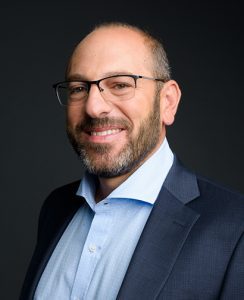
In Conversation: Dr. Vipin K. Garg, CEO of Altimmune
The development of several SARS-CoV-2 vaccines in less than a calendar year has fundamentally altered the biopharma development and manufacturing landscape.
The widely held concept that the drug development, manufacturing, and commercialization lifecycle is about 10 years has been disrupted, not only by the rapid and largely successful deployment of the Pfizer, Moderna, and Johnson & Johnson vaccines but also by innovations in cell and gene therapy that have cut that time to market in half.
This brave new biotech world has been a double-edged sword, however. The industry now realizes it can move drugs to market faster, but there have been challenges as the supply chain and manufacturing infrastructure grapples with global material shortages and manufacturing capacity challenges.
This has been a time of great innovation and disruption for companies like Gaithersburg, Maryland’s Altimmune, which rapidly pivoted to developing its own SARS-Cov-2 intranasal vaccine candidate, AdCOVID™, while simultaneously pushing to advance other drugs in its robust pipeline.
Dr. Vipin Garg, Altimmune’s (ALT) CEO since 2018 and a biotech industry veteran, has successfully led the publicly-traded company through these turbulent pandemic waters.
We recently caught up with Dr. Garg to discuss the pandemic, Altimmune’s deep product pipeline, his unique perspectives on the BioHealth Capital Region (BHCR), and the state of the U.S. supply chain and biotech manufacturing ecosystem.
You joined Altimmune as CEO in 2018. What made this an attractive opportunity for you at the time?
I’ve enjoyed diverse experiences throughout my career including building companies from the ground up and forming companies based on university research. As CEO, I have led two companies through successful IPOs and launched several commercial products. I’ve always been heavily involved in R&D and shepherding products through the FDA approval process.
In 2018, I was attracted to the Altimmune opportunity considering the company had just recently been recapitalized and the board was keen to diversify the company’s product portfolio. While Altimmune had a strong vaccine technology platform, in 2018 very few investors were interested in vaccines, making it difficult for a small biotech company to attract the funding necessary for large field studies. I saw an opportunity to make the most of the vaccine portfolio while also taking the company into new therapeutic areas. Having built companies in multiple therapeutic areas, Altimmune represented a great opportunity to deploy my breadth of experience.
In 2019, we acquired Spitfire Pharma, which had a unique peptide technology platform that we believed could improve a very large drug class called GLP-1 agonists. This is a potentially very powerful therapeutic candidate for metabolic diseases that we brought into the company. Additionally, we prioritized the development of HepTcell, a potential cure for Hepatitis B, and began the development of ALT-702, a peptide to treat solid tumors. These programs, in addition to our vaccine platform, gave us multiple shots on goal in diverse disease indications that address large unmet needs.
What has it been like leading a company that pivoted to fighting COVID while having to advance other elements of its pipeline?
It was an easy decision to jump into the COVID vaccine race. Throughout Altimmune’s history, we had always pitched investors and funding organizations that our intranasal vaccine platform was especially well suited for a pandemic because many of the viruses with pandemic potential are respiratory in nature and enter through the nasal cavity. Our primary differentiating feature is the induction of mucosal immunity in the nose and lungs, which is induced by our intranasal administration. So, it makes sense to attack the virus at the point of entry. We were able to quickly design our intranasal COVID-19 vaccine candidate, AdCOVID, and start testing it in animals while we simultaneously advanced therapeutic candidates based on our peptide technology platform.
As is still the case today, during 2020 every night the news was reporting on epidemiology and the impact of COVID-19. We saw the international conversation focus on infectious diseases, vaccine development, and vaccine logistics. We saw a shift in this environment, as investors and the scientific community became very interested in our intranasal vaccine approach. As a result, we were able to raise a significant amount of capital and we have been able to balance our vaccine and peptide programs and move them forward on parallel paths.
What has the pandemic taught Altimmune and the biotech industry about vaccine and drug development?
I think this pandemic has made the entire industry aware that we need to be ready to fight the next pandemic. This isn’t just about COVID-19. There likely will be other pandemics. We cannot be complacent anymore. There has been a fundamental shift in how people view vaccine development now, and society is realizing that we need to have platform technologies ready to go for when the next pandemic happens.
The pandemic has also taught us that we can actually develop drugs a lot faster than we used to. We were kind of stuck in this thinking that it takes about ten years to develop a new vaccine or drug. Industry, government, and regulators came together and developed and commercialized a vaccine in less than 12 months.
And now we can ask, ‘Why can’t we develop the next cancer drug that fast?’ Our thinking is being challenged on multiple fronts about how we can develop drugs faster and more efficiently.
Altimmune is in a very fortunate position with our strong vaccine platform. We plan to continue our investments in vaccine development so we can be prepared for the next pandemic. With the cash we have raised, we’ve strengthened our people and infrastructure such that we can respond even faster the next time we are required to do so.
Altimmune reported positive AdCOVID™ mouse model results in mid-March 2021. What are the next milestones for the AdCOVID clinical trial and how is AdCOVID potentially better/different than other existing and potential COVID-19 vaccines?
The mouse data was excellent and showed 100% survival. We are very excited about this recent data.
One of the obvious benefits of AdCOVID is that it doesn’t require a shot. Also, our vaccine not only activates neutralizing antibodies but also activates a special arm of our immune system called mucosal immunity. Current vaccines only generate antibodies in the blood or serum. When you go through the intranasal route of administration you not only get serum immunity, but also the additional benefit of mucosal immunity.
The additional benefit is twofold: First, our vaccine has the potential to prevent infection because the nose is where COVID gets a foothold and mucosal immunity may neutralize the virus before it ever enters the bloodstream; and secondly it may also block transmission from the nasal cavity where the virus leaves the body, which is important for asymptomatic carriers. While the first-generation vaccines are doing well at preventing infection, AdCOVID has the potential to prevent transmission as well as infection.
If you think about children, for instance, they don’t typically get severely ill, which is good, but they can be easily infected, and they can transmit the disease to higher-risk loved ones at home and at school. There is a dire need for a vaccine that prevents disease in children and blocks transmission. The intranasal, needle-free delivery is highly attractive for the pediatric population as well, as we have seen with AstraZeneca’s Flumist.
AdCOVID is designed as a single-dose vaccine and has an excellent stability profile, which in the long run will be important to providing the vaccine around the world. There is no cold chain required to transport AdCOVID. It can be stored at room temperature for months and can be kept in a refrigerator for about two years. In addition, our vaccine has shown to be like taking a placebo or saline in that there have been no adverse reactions.
Tell our audience about NasoShield™, how it works, and what’s next for this product after the recent Phase 1B positive data readout.
NasoShield is an anthrax vaccine that is funded by BARDA. The current anthrax vaccine requires three doses and has significant logistical challenges. There is a two-dose vaccine that’s coming online soon.
NasoShield is a potential single-dose, intranasal anthrax vaccine that would be an attractive alternative. We just completed a Phase Ib trial and we’re working with BARDA to determine the next steps in NasoShield’s development.
It seems like we’ve entirely forgotten about influenza with all of our attention on COVID-19. How is NasoVAX™ progressing and how is it different/better than AstraZeneca/MedImmune’s FluMistⓇ?
FluMist is an interesting intranasal product and was very effective and successful for a while. FluMist activates mucosal immunity, but it was not effective in generating serum immunity. It is a totally different technology than NasoVAX. FluMist uses an inactivated virus whereas our vaccine uses a live, activated adenovirus that is a common cold virus whose sole purpose is to be highly infective.
We’re using a natural ‘Trojan Horse’ that is very effective in gaining entry to our mucosal cells and then delivering the antigen payload. The antigen then activates multiple arms of the immune system. Our vaccine activates mucosal antibodies, serum antibodies, and T-Cells. NasoVAX can potentially activate all three arms of the immune system whereas FluMist only activates one.
You’ve been operating in the BioHealth Capital Region (MD, DC, VA) for a few years now. How does running a biotech company in the BHCR compare to your experience leading a company in North Carolina’s Research Triangle?
I’ve worked in five major biotech hubs. I started my career in the San Francisco Bay Area, then I went to Boston, New Jersey, and North Carolina.

We have a vibrant biotechnology ecosystem in the BioHealth Capital Region because of the proximity to NIH and the FDA, the excellent university systems, industry, and experienced entrepreneurs. Success breeds success. There have been many successful biotech stories like MedImmune/AstraZeneca, Emergent Biosolutions, and Novavax and there has been this accumulation of successful companies over the years that created a pool of entrepreneurs who started new companies.
All of the resources are here and there is great real estate suited to biotech. Relatively speaking, it’s easier to find labs here than in other hubs. There’s enough turnover in the region that smaller companies can retrofit existing space to get going instead of spending millions on building a new lab.
There is also access to a lot of talent here. We’ve doubled in size to over 50 people in the last year. We’ve been fortunate that our new hires are mostly local. We’ve hired PhDs, MDs, regulatory experts, and clinical trials specialists all from the region.
There’s a lot of demand for talent in the BioHealth Capital Region but we’ve managed to find the right people to grow and scale up quickly.
What is your perspective on the state of the U.S. supply chain and biotech manufacturing capacity?
These are issues that we’re thinking about every day. Right now, the biggest bottleneck the industry faces in developing second-generation vaccines is the lack of manufacturing space. We can do our trials faster if we had more clinical trial materials and supplies available.
Things like bioprocess filters are in short supply. Chromatography columns are in short supply, too. Bioreactor parts are hard to get. A shortage of any element or piece of equipment you use can impact a company’s development timeline.
We learned from the pandemic that we can’t rely on overseas suppliers. The U.S. needs to be self-sufficient; we need to figure out how to create more domestic infrastructure in the U.S. to make medicines. And this isn’t just about vaccines. A disruption in the supply chain could impact things that we take for granted, such as pain medications, for example.

There needs to be a lot of emphasis on building supply chain and manufacturing infrastructure here in the U.S. We’re having to make hard choices rather than being able to provide what companies need. We have to think about how we can expand our manufacturing capacity that can make quality pharmaceutical products.
What is the essence of the Altimmune brand and how important is culture fit in your recruiting and hiring process?
We’re still a small company. We have a family culture and a flat organizational structure. Everyone is encouraged to share their ideas on how to do things better and faster. We have a culture of inclusion at Altimmune and we’re looking to build a company of top-notch people who are experts in their field and have the passion to make people’s lives better.
We are building an entire portfolio of products with the potential to make a big impact on public health.
As a small company, we rely on our people to wear many hats and bring an element of creativity and entrepreneurial spirit to everything that we do. Everyone at Altimmune is empowered to make decisions so we can move our product pipeline forward as quickly as possible. This spirit was especially helpful during the start of the pandemic as we all had to make decisions quickly and decisively.
In every aspect of our business, we have people working in interdisciplinary ways that require them to think on their feet and make informed decisions to keep making progress. We have a very thorough recruiting process to make sure that we retain smart people whose attributes align with our culture.
We’re very excited that we’ve created multiple shots on goal for Altimmune. We are well-financed, we have a great, growing team, and we are executing our plan. Our vaccine and peptide platforms give us great flexibility and an excellent opportunity to build a world-class company.
- About the Author
- Latest Posts
Steve brings nearly twenty years of experience in marketing and content creation to the WorkForce Genetics team. He loves writing engaging content and working with partners, companies, and individuals to share their unique stories and showcase their work. Steve holds a BA in English from Providence College and an MA in American Literature from Montclair State University. He lives in Frederick, Maryland with his wife, two sons, and the family dog.






